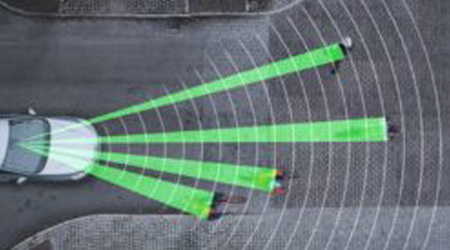BRUSSELS, December 2016 – Last December 2016, the European Commission released its report on the protection of pedestrians and other vulnerable road users to the European Parliament and the Council. The report provides an overview of the feasibility and cost-benefit assessment of a wide range of candidate measures for possible inclusion in the General Safety and Pedestrian Safety Regulations. 19 measures are now proposed to be debated in view of the review of the General Safety and Pedestrian Safety Regulations and some of those proposed measures regard the interaction with cyclists.
Automatic Emergency Braking (AEB)
AEB combines sensing of the environment ahead of the vehicle with the automatic activation of the brakes (without driver input) in order to mitigate or avoid an accident. First generation AEB for passenger cars (M1) are capable of automatically mitigating the severity of two-vehicle, front to rear shunt accidents (on straight roads and curves dependent on sensor line of sight and environment ‘clutter’) as well as some collisions with fixed objects and motorcycles. These systems are becoming more and more common, notably through Euro NCAP encouragement for systems that can detect slow moving or even stopped vehicles ahead. This is also the case for systems that have the capability to detect pedestrians and bicyclists, although these systems are currently still less common but increasingly available on a number of car models. In the context of the review of the General Safety and Pedestrian Safety Regulations, the European Commission states that an introduction timeline should be considered that allows for a phase in of the detection capabilities and mandatory introduction on passenger cars (M1) and vans (N1). Validated test procedures for AEB for M1 vehicles have been developed and implemented by Euro NCAP and could be used as a basis for future legislation. This this could be revolutionary for reducing crashes, fatalities and serious injuries.
Driver Drowiness or Distraction Monitoring
Distraction and drowsiness are both considered types of driver inattention for which the key shared feature is the absence of visual attention on the driving task, either due to fatigue or due to some activity that competes for a driver’s visual attention. Adding new technology to vehicles that can correct driver mistakes because of lack of observance will make cars safer. A wide range of technologies may be used to identify distraction or drowsiness in drivers in order to minimise related accidents. Systems may employ physiological monitoring, physical monitoring or behavioural indices and patterns. The European Commission states that the review of the General Safety Regulation should consider the introduction of technology neutral solutions that could help address this increasingly common threat to road safety and that they should be mandatory for all M and N vehicles.
Trucks and buses – Front-end Design and Direct Vision
For reasons related to efficient use of available space, mainly due to limitation of truck and trailer dimensions when driving within the EU, truck drivers are seated high on top of the engine since many decades. This high seating position is highly detrimental for the direct vision capability of the driver, especially concerning what happens in the vicinity of the truck’s front end. Whilst representing only 3% of vehicles on EU roads, trucks have been involved in a disproportionate number of collisions.
It has been suggested that either better mirrors and detection systems or simply the addition of side windows in the lower portion of truck cab doors could be required to improve the situation, but the effectiveness of such short-term measures may not be sufficient. It has however been suggested that a comprehensive improvement of direct vision of truck drivers has the potential to greatly contribute to much improved safety for vulnerable pedestrians and bicyclists.
Some of the concrete measures suggested are the focus on direct vision requirements to reduce blind spots and, in the short term, deploy camera or detection systems to reduce blind spots to be made mandatory for M2, M3, N2 and N3 vehicles.
As part of the preparatory process, the Commission will involve stakeholders and ask citizens for their feedback on the considered new vehicle safety rules. For this purpose, the Commission will prepare an inception impact assessment . The feedback that will be provided can then be taken into account for the further development of the policy proposal.





